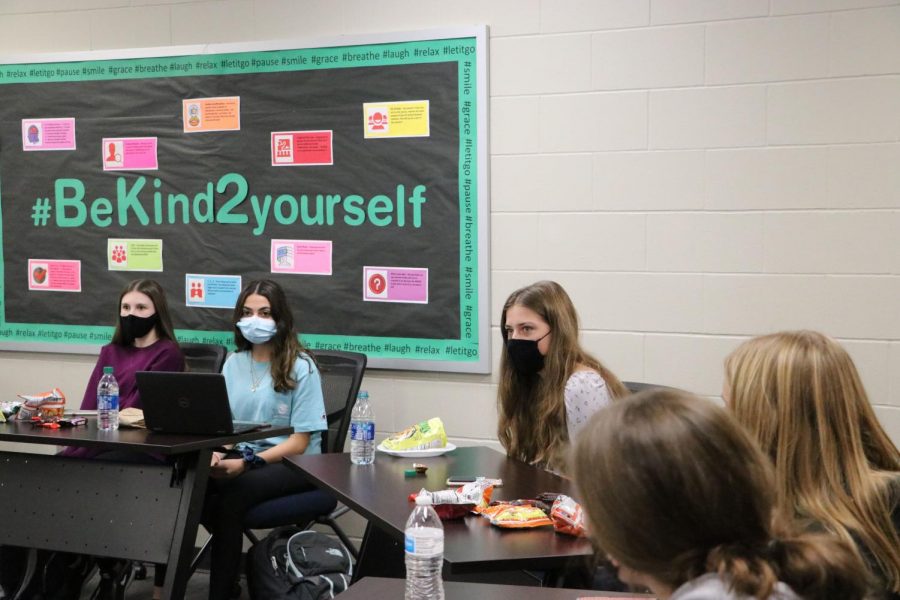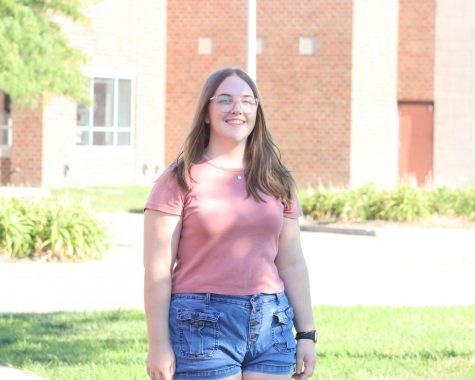Discussing diversity
Millard West starts council to confront racial inequality
Diversity Council members eat lunch and discuss at an October meeting. They focused on the topic of racial identity. “I am looking forward to hopefully making school a safer place for every student,” junior Emery Golliday said. “I hope that the Diversity Council will be able to make visible changes in the community.”
October 12, 2020
On Friday, September 25, Millard West’s Diversity Council held their inaugural meeting. The council, made up of students, staff and administrators, was formed this year as a platform for students to express concerns regarding diversity and inclusion.
Other Millard high schools will also have diversity councils as part of a district-wide initiative to confront racial injustice. The idea was sparked by administrators’ conversations with current and former students after the rise of Black Lives Matter protests over the summer. Students brought up issues such as a previous play at Millard West with racially insensitive themes and a lack of non-white authors in the school’s library.
“Some things were pointed out to us by students of Millard. They were concerned that at the local level, we could do a better job of recognizing where systemic racism is in our own community,” principal Dr. Greg Tiemann said. “There were some people who brought up some pretty pointed examples of things that are not right within our community. I thought that was sad to hear, and I need to listen to understand what’s going on at Millard West.”
The council will focus on themes of racial identity and cultural values with the ultimate goal of making Millard West more equal and inclusive. Students will share their thoughts on issues ranging from headwinds faced by students of color to students’ level of preparedness for leaving the Millard area. They will have the opportunity to bring their concerns to the table and brainstorm potential solutions with the group. The primary focus will be listening to students’ perspectives.
“My thinking was I am not going to lecture to students about how to think and feel about all of this,” Tiemann said. “None of us are going to. It’s going to be about listening. Maybe the only words we have out of our mouths during a whole session are ‘tell me more about that.’ Our role is to listen and learn and give an opportunity for voice.”
During upcoming meetings, the council will work out which issues students feel need to be addressed. They plan on working with other clubs and groups of students to expand this conversation. At a meeting in September, members of Justice and Diversity League brainstormed some potential concerns that they could bring to the council. These included ethnocentrism in history curriculum, use of racial slurs, education on current events, addressing racism through anti-bullying lessons and culturally insensitive terminology used in the classroom.
“We can’t address socioeconomic status, we can’t address institutionalized discrimination in lending practices for houses or hiring practices for business, but we can address the things that our school controls, like curriculum and bullying and racial slurs,” social studies teacher and Diversity Council staff member Bryant Bull said. “We can’t control everything in our students’ lives, but we can control what happens here.”
There are currently 15 students on the council. Many of them were scouted from existing leadership groups at Millard West, including National Honors Society, Student Council and Justice and Diversity League. The group is small enough to promote open conversations but big enough to encompass different perspectives. Meetings, which last for about an hour, will be held once a month.
“I’m glad that we are able to sit down and talk to top-level administration and discuss these crucial issues that are often overlooked by many,” senior and Diversity Council member Jordan Bakar said. “I was also glad that the council has brought in various kinds of people from all sorts of grade levels from the school. This means that the organization will continue to build from the past year, even long after I graduate.”
Because September 25 was a teacher work day, the first meeting was held over Zoom. Council members introduced themselves to each other before going over group norms. They also had a discussion about key vocabulary, led by Bull, to ensure that everyone was on the same page about the context of phrases like bias, discrimination, oppression, institutional racism, privilege, race, ethnicity and diversity. At the end of the meeting, they picked representatives from each grade to be on a district council which will focus on teacher hiring practices and diversity in school curriculum.
“From the first meeting, we came to a consensus that we were there to start a conversation between staff and students to address what is wrong at school,” junior and Diversity Council member Julia Wegiel said. “The first step, of many, to create meaningful change here at Millard West was to create an organization like Diversity Council that forces regular communication of students and staff. Now that we have done so, we can start the real work.”
Millard West’s Diversity Council will continue to meet once a month. They will voice long-standing concerns and work to make meaningful change within the school.







